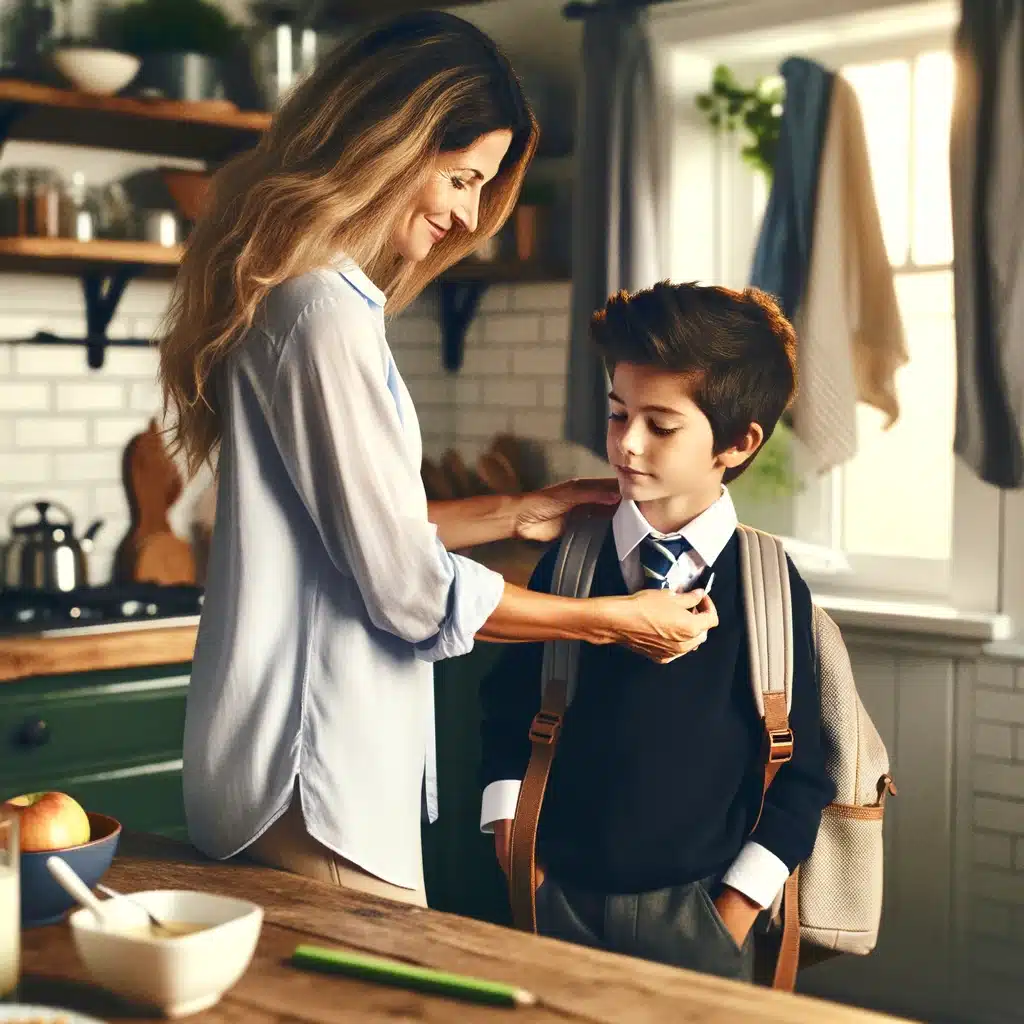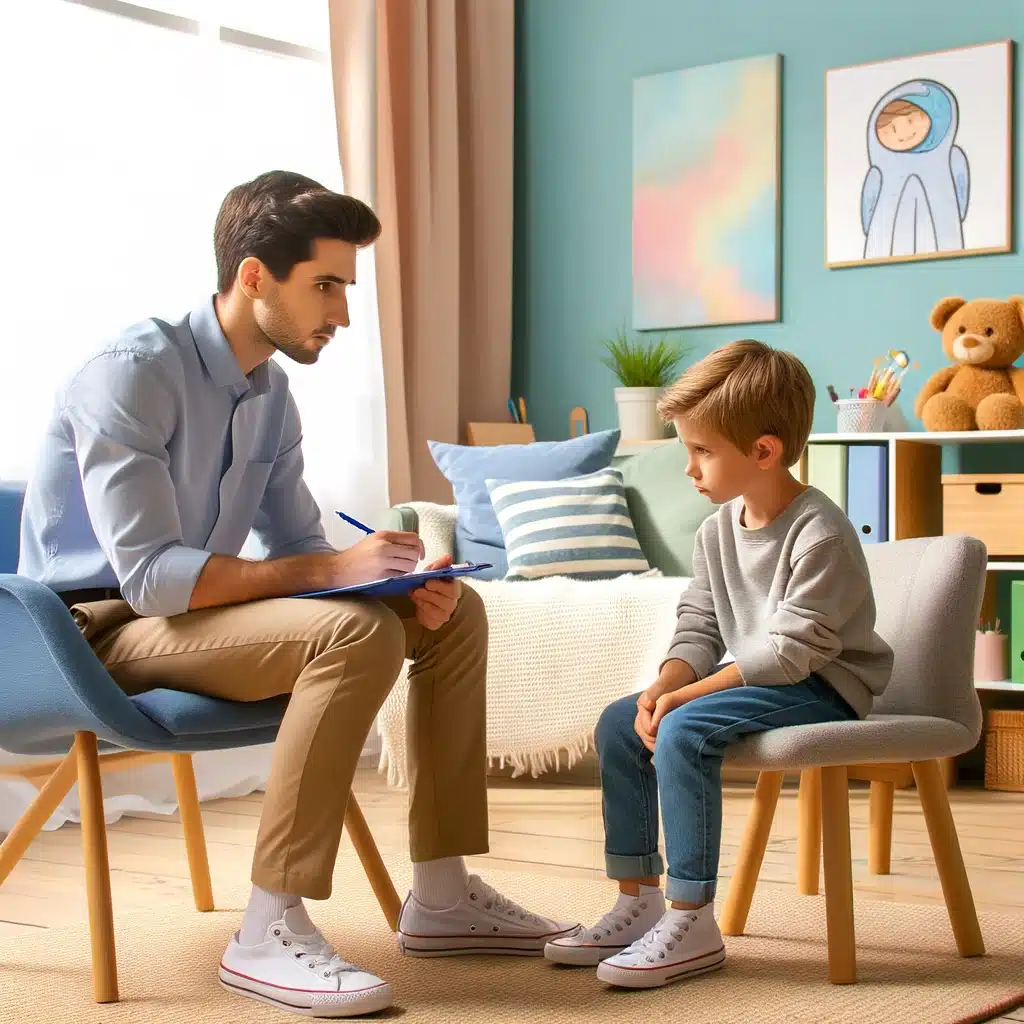Unraveling the Mysteries of Reunification Therapy: When a Child Refuses to Reconnect

Picture this: a seemingly endless game of hide-and-seek where the seeker is a heartbroken parent desperately searching for their lost connection with their own child. It’s a heart-wrenching scenario that many divorced parents face when their child refuses to engage in reunification therapy, leaving them at a loss for what to do next. If you’ve ever found yourself caught in this emotional tug-of-war, fear not! In this article, we will dive headfirst into the captivating world of “child refuses reunification therapy” and uncover practical strategies, eye-opening insights, and heartwarming tales of triumph.
So, why should you keep reading?
Short answer: Reunification therapy holds the key to mending fractured parent-child relationships, but it’s not always a smooth journey. By exploring the challenges, solutions, and success stories surrounding this topic, you’ll gain a deeper understanding of the impact of divorce on parents and children, discover strategies for nurturing relationships amidst adversity, and find hope in the face of seemingly insurmountable obstacles.
Now, let’s embark on a remarkable adventure where we’ll unravel the enigma of reunification therapy, one heartstring at a time. Get ready to be captivated, informed, and inspired as we navigate the complexities of parent-child dynamics, conquer the hurdles of post-divorce life, and witness the incredible power of love, resilience, and healing. Together, we’ll delve into the fascinating world of “child refuses reunification therapy” and emerge with newfound wisdom and a renewed sense of hope. Let the journey begin!
The Impact of Divorce on the Mental Health of Parents and Children
Divorce is a life-altering event that can have significant repercussions on the mental health of both parents and children involved. The emotional stress and turmoil experienced during this challenging time can take a toll on individuals, leading to various mental health issues.
For parents, the dissolution of a marriage often brings feelings of grief, anger, and sadness. The sudden shift in family dynamics and the loss of a once-close relationship can be overwhelming. The uncertainty surrounding the future and the fear of not being able to maintain a strong connection with their children can contribute to heightened anxiety and depression.
Similarly, children are not immune to the emotional impact of divorce. They may experience a range of emotions, including confusion, sadness, anger, and guilt. The stability and security they once knew may be disrupted, causing feelings of insecurity and uncertainty about their place in the family. These emotional challenges can manifest in various ways, such as changes in behavior, academic performance, and social interactions.
The Effects of Stress and Anxiety During a Family Law Case
Divorce proceedings and child custody battles can be highly stressful and anxiety-inducing for all parties involved. The legal process, with its complexities and uncertainties, can amplify the emotional strain already present due to the dissolution of the marriage. The fear of losing custody or not being able to spend enough time with their children can intensify stress levels for parents.
Children, too, can experience heightened stress and anxiety during a family law case. They may be caught in the middle of disputes between their parents, witnessing arguments and tension that can deeply impact their well-being. The constant exposure to conflict and the fear of losing contact with one parent can lead to increased anxiety and emotional distress.
It is crucial to recognize and address the effects of stress and anxiety during this challenging time. Seeking support from family, friends, or professional counselors can provide a much-needed outlet for parents and children to express their feelings and navigate the turbulent waters of divorce.
Strategies for Maintaining Relationships with Children During and After Divorce
Maintaining healthy relationships with children during and after divorce requires careful attention and intentional effort from both parents. Despite the challenges, there are strategies that can help foster positive connections and minimize the negative impact of the divorce on parent-child relationships.
Open and honest communication is paramount. Both parents should prioritize clear and age-appropriate communication with their children, reassuring them of their love and commitment. This includes explaining the divorce in a manner that the child can comprehend and providing a safe space for them to express their feelings.
Consistency is key in establishing stability for children. Implementing predictable routines and schedules can provide a sense of security and normalcy amid the changes brought about by the divorce. Both parents should strive to maintain consistent rules and expectations across households, minimizing confusion and potential conflicts.

Co-parenting effectively is vital for the well-being of children. This involves maintaining a cooperative relationship with the other parent, prioritizing the child’s needs above personal differences. Collaboration on major decisions, such as schooling or medical matters, demonstrates to the child that both parents are still actively involved in their lives.
Parental Alienation and Its Impact on Parent-Child Relationships
One unfortunate consequence of divorce is the potential for parental alienation, which can have devastating effects on parent-child relationships. Parental alienation occurs when one parent actively undermines or manipulates the child’s perception of the other parent, leading to the child’s rejection or hostility towards that parent.
The alienating parent may engage in behaviors such as making derogatory remarks about the other parent, limiting contact or access, or involving the child in adult conflicts and disputes. Over time, this can result in the child forming negative attitudes and beliefs towards the targeted parent, severing the bond between them.
The impact of parental alienation on parent-child relationships is profound. The targeted parent may experience profound grief and a sense of loss, while the child may develop emotional and psychological issues due to the ongoing conflict and fractured relationships. It is crucial to address and prevent parental alienation through legal interventions and therapeutic support to protect the well-being of the child and promote healthy parent-child relationships.
The Role of Counseling and Therapy in Addressing Strained Parent-Child Relationships
Counseling and therapy play a vital role in addressing strained parent-child relationships in the aftermath of divorce. These therapeutic interventions provide a safe and neutral space for both parents and children to express their emotions, process their experiences, and work towards rebuilding their connection.
Family therapy can be particularly beneficial, as it allows all family members to participate in the healing process. A skilled therapist can help facilitate productive communication, guide conflict resolution, and assist in establishing new dynamics that promote healthy relationships. The therapy sessions focus on improving understanding, empathy, and cooperation between parents and children.

Individual therapy can also be beneficial for parents and children alike. It provides an opportunity for each individual to explore their emotions, identify coping strategies, and address any underlying mental health issues that may be impacting their relationships. Therapists can offer guidance and support tailored to the specific needs of each individual, helping them navigate the challenges of post-divorce life.
Through counseling and therapy, parents and children can gain valuable insights, develop effective communication skills, and work towards rebuilding trust and connection. It is a process that requires time, patience, and commitment but can ultimately lead to healthier and more fulfilling parent-child relationships.
Challenges Faced by Children Living in Two Households After a Divorce
Children living in two households after a divorce face unique challenges as they navigate the complexities of dual residences. Adjusting to different rules, routines, and expectations in each household can be confusing and overwhelming for children, particularly if there is a lack of consistency or cooperation between parents.
The logistical challenges of managing schedules, transportation, and belongings between households can also be stressful for children. They may feel torn between two homes, longing for a sense of stability and a place to truly call their own. Additionally, the emotional strain of dividing time between parents and potentially feeling guilty about enjoying time with one parent over the other can take a toll on their well-being.
To mitigate these challenges, parents can strive to create a sense of continuity and predictability across households. Maintaining consistent rules, routines, and expectations can provide children with a sense of stability and reduce confusion. Encouraging open communication and flexibility between parents can also help address any logistical issues that arise and ensure the child’s needs are prioritized.
Furthermore, fostering a positive co-parenting relationship can alleviate some of the stress experienced by children. When parents work together, respect each other’s roles, and communicate effectively, it creates a supportive environment for the child to thrive in both households.
The Importance of Setting Treatment Goals in Reunification Therapy
Reunification therapy is a specialized form of counseling aimed at repairing and rebuilding relationships between parents and children who have been estranged or separated. Setting treatment goals is an essential component of reunification therapy as it provides a roadmap for the therapeutic process and helps guide interventions.
The specific treatment goals in reunification therapy may vary depending on the unique circumstances of each family. However, some common objectives include:
- Reestablishing trust and rapport between the parent and child.
- Addressing and resolving underlying conflicts and issues that contributed to the separation.
- Enhancing communication skills and promoting effective co-parenting strategies.
- Facilitating the child’s understanding and acceptance of the parent’s role in their life.
- Reducing resistance, fear, or anxiety that may be hindering the reunification process.
- Promoting a safe and supportive environment for the parent and child to rebuild their relationship.
By setting clear and achievable treatment goals, both the therapist and the family can work collaboratively towards the desired outcomes. Regular reassessment and adjustment of these goals ensure that the therapy remains focused and impactful, ultimately facilitating the reunification process.
Anticipating and Addressing Anxiety and Fear in Children During Therapy
Children involved in therapy, particularly those undergoing reunification therapy, may experience anxiety and fear as they navigate the therapeutic process. These emotions can stem from a variety of sources, such as past traumas, unresolved conflicts, or the uncertainty of the therapy’s outcome.
Therapists and parents must be proactive in anticipating and addressing anxiety and fear in children to create a supportive and conducive therapeutic environment. Here are some strategies that can help:
Establishing trust: Building a trusting relationship between the child and therapist is crucial. The child should feel safe and comfortable expressing their fears and concerns without judgment.
Psychoeducation: Providing age-appropriate information about the therapy process can alleviate anxiety by offering a clear understanding of what to expect. This can include explaining the purpose of therapy, the roles of different individuals involved, and the child’s active role in the process.
Validation of emotions: Acknowledging and validating the child’s feelings of anxiety and fear can help them feel heard and understood. Normalizing their emotions and assuring them that it is okay to feel anxious can reduce their distress.
Gradual exposure: Introducing therapeutic activities and interventions gradually can help ease the child into the process. Starting with less challenging tasks and progressively building up to more complex exercises allows the child to acclimate and gain confidence.
Mindfulness and relaxation techniques: Teaching children relaxation techniques, such as deep breathing exercises or visualization, can empower them to manage their anxiety and fear during therapy sessions.
By implementing these strategies, therapists and parents can create a therapeutic environment that promotes trust, understanding, and emotional well-being, enhancing the child’s overall therapy experience.
Non-linear Progress and Setbacks in Reunification Therapy
Reunification therapy is a complex and delicate process that does not follow a linear path. Progress towards reunification can be nonlinear, with periods of growth and setbacks along the way. It is important for parents and therapists to understand and anticipate these fluctuations to manage expectations and support the family effectively.
Setbacks can occur due to various factors, such as unresolved conflicts resurfacing, external stressors impacting the therapeutic process, or the child’s emotional resistance to change. It is essential to view setbacks as opportunities for learning and growth rather than signs of failure.
During periods of setback, additional support and interventions may be necessary. This could involve revisiting previous therapeutic goals, adapting strategies to address new challenges, or temporarily intensifying the therapy process to reestablish progress.
Therapists play a vital role in guiding families through setbacks, offering empathy, reassurance, and professional expertise. By providing ongoing support, encouragement, and a safe space for processing setbacks, therapists can help families navigate these challenging moments and continue working towards reunification.
Selecting the Right Therapist for the Family’s Needs
Choosing the right therapist for reunification therapy is a crucial decision that can significantly impact the success of the therapeutic process. Several factors should be considered when selecting a therapist to ensure a good fit for the family’s specific needs:
Expertise and experience: Look for therapists who specialize in family therapy, specifically reunification therapy. They should have experience working with families in similar situations and be knowledgeable about the dynamics and challenges involved.
Empathy and understanding: A therapist who demonstrates empathy, understanding, and cultural sensitivity can create a safe and supportive environment for the family. This facilitates open communication and trust-building.
Collaboration and teamwork: Reunification therapy often involves multiple individuals, including the child, parents, and potentially other family members. A therapist who values collaboration, actively involves all parties, and promotes teamwork can foster a positive therapeutic experience.
Communication style: Assess the therapist’s communication style and ensure it aligns with the family’s preferences and needs. Effective communication is essential for establishing rapport and facilitating understanding between the therapist and family members.
Compatibility and trust: Trust your instincts and consider the compatibility between the therapist and the family. Feeling comfortable and confident in the therapist’s abilities is vital for establishing a strong therapeutic alliance.
Before committing to a therapist, it is beneficial to conduct an initial consultation or interview to assess these factors. This allows the family to make an informed decision and select a therapist who is best suited to guide them through the reunification process.
Managing Frustrations and Expectations in Therapy
Therapy can be a challenging and emotionally charged process for both parents and children. Frustrations and high expectations are common, but it is important to manage them effectively to ensure a productive therapeutic journey.
One key aspect of managing frustrations is maintaining open and honest communication. Allowing space for the expression of frustrations and concerns within the therapeutic setting can prevent them from negatively impacting the parent-child relationship outside of therapy. The therapist can guide the family in exploring these frustrations, identifying underlying causes, and working towards constructive solutions.
It is crucial to establish realistic expectations for therapy. Reunification is a gradual process that takes time, patience, and effort from all parties involved. Setting unrealistic or rigid expectations can lead to disappointment and hinder progress. The therapist can help the family develop realistic goals and timelines, fostering a sense of optimism while acknowledging the potential challenges.
Flexibility and adaptability are essential when managing frustrations and expectations. Recognize that therapy may require adjustments along the way as new insights are gained, setbacks are addressed, or circumstances change. Embracing a flexible mindset allows for fluidity in the therapeutic process and promotes resilience and growth.
Additionally, practicing self-care is vital for both parents and children. Engaging in activities that promote relaxation, stress reduction, and emotional well-being outside of therapy sessions can help manage frustrations and maintain a positive mindset throughout the therapeutic journey.
Supporting Children with Developmental Delays or Special Needs in Counseling
Children with developmental delays or special needs may require additional support and accommodations in counseling and therapy settings. It is crucial to ensure that the therapeutic approach is tailored to meet their unique needs and abilities.
When working with children with developmental delays or special needs, therapists should:
Conduct a comprehensive assessment: A thorough assessment of the child’s strengths, challenges, and specific needs is necessary to inform the therapeutic approach. This may involve collaborating with other professionals, such as educators or medical providers, to gain a holistic understanding of the child’s abilities.
Adapt therapeutic techniques: Therapists should adapt their therapeutic techniques and interventions to accommodate the child’s developmental level and sensory needs. This may involve using visual aids, simplifying language, or incorporating sensory integration strategies to enhance engagement and understanding.
Involve the child’s support network: Collaboration with parents, caregivers, and educators is crucial in supporting the child’s progress. Sharing strategies, providing resources, and ensuring consistency across environments can reinforce the therapeutic interventions and promote generalization of skills.
Employ a multidisciplinary approach: In some cases, a multidisciplinary approach involving various professionals, such as occupational therapists, speech therapists, or behavioral specialists, may be beneficial. This collaborative approach ensures comprehensive support and addresses the child’s diverse needs.
By providing tailored support and accommodations, therapists can create an inclusive and effective counseling environment for children with developmental delays or special needs, promoting their emotional well-being and overall growth.
Conflict Resolution and Negotiation in Divorce Cases
Divorce cases often involve conflicts and disputes between parents regarding various issues, including custody arrangements, visitation schedules, and financial matters. Effective conflict resolution and negotiation skills are essential in navigating these challenges and reaching mutually agreeable solutions.
Therapists can play a valuable role in facilitating conflict resolution and negotiation by:
Creating a safe and neutral space
Therapy sessions provide a neutral ground where parents can express their concerns, emotions, and perspectives in a safe and non-confrontational environment. The therapist ensures that both parties feel heard and respected.
Promoting active listening and empathy
Therapists guide parents in actively listening to each other’s viewpoints and empathizing with their experiences. This fosters understanding and helps bridge communication gaps.
Facilitating effective communication
Therapists teach and model effective communication skills, such as using “I” statements, avoiding blame, and focusing on problem-solving rather than personal attacks. These skills enable parents to express their needs and concerns constructively.
Exploring compromise and collaboration
Therapists encourage parents to explore collaborative solutions and compromise when appropriate. This may involve brainstorming options, considering the best interests of the child, and finding common ground.
Reframing conflicts as opportunities for growth
Therapists help parents reframe conflicts as opportunities for personal growth and positive change. By viewing challenges as a chance to improve their co-parenting relationship, parents can approach negotiations with a more constructive mindset.
Conflict resolution and negotiation in divorce cases require patience, flexibility, and a willingness to prioritize the well-being of the child. With the guidance of a skilled therapist, parents can develop the skills and strategies necessary to navigate conflicts and create a more harmonious post-divorce relationship.
Strategies |
Benefits |
|
Open and honest communication |
– Establishes trust and understanding – Allows children to express their thoughts and feelings |
|
Consistency in parenting |
– Provides stability and routine – Reduces confusion and anxiety for children |
|
Active involvement in children’s lives |
– Demonstrates love and commitment – Fosters a sense of belonging and security |
|
Co-parenting collaboration |
– Promotes healthy co-parenting relationship – Minimizes conflicts and puts children’s needs first |
|
Creating a child-centered environment |
– Prioritizes children’s well-being and happiness – Helps children feel valued and supported |
|
Flexibility and adaptability |
– Accommodates changing circumstances and schedules – Allows for smooth transitions and less disruption |
|
Encouraging positive experiences and memories |
– Creates a nurturing and enjoyable environment – Strengthens the parent-child bond through shared experiences |
|
Seeking professional guidance when needed |
– Provides expert advice and support – Helps navigate challenges and find effective solutions |
|
Respecting the other parent’s role |
– Models respect and cooperation – Reduces tension and promotes a harmonious co-parenting dynamic |
|
Prioritizing self-care and well-being |
– Enhances emotional and mental health – Enables parents to be their best selves for their children |
|
Being patient and understanding with the child’s emotions |
– Validates the child’s feelings and experiences – Encourages emotional growth and healing |
|
Creating a support network of family and friends |
– Offers additional sources of support and guidance – Provides a sense of community and understanding |
|
Consistently showing love and affection towards the child |
– Reinforces the parent-child bond – Boosts the child’s self-esteem and sense of security |
|
Allowing the child to express their preferences and opinions |
– Empowers the child to have a voice and be heard – Encourages autonomy and decision-making skills |
The Importance of Maintaining an Even Temper and Positive Attitude in Post-Divorce Relationships
Maintaining an even temper and a positive attitude in post-divorce relationships is crucial for fostering healthy co-parenting dynamics and promoting the well-being of the child. Although it can be challenging, adopting a positive mindset and managing one’s emotions positively can have significant long-term benefits.
Here are some reasons why maintaining an even temper and a positive attitude is important:
Role modeling
Children learn from observing their parents’ behavior and attitudes. By demonstrating composure, positivity, and respect, parents can model healthy emotional regulation and conflict resolution skills, which children can emulate.
Co-parenting effectiveness
Positive attitudes and effective communication contribute to more cooperative and productive co-parenting relationships. When parents approach discussions and decision-making with a positive mindset, they are more likely to find mutually agreeable solutions and prioritize the best interests of the child.
Emotional well-being
A positive attitude and emotional stability contribute to personal well-being and resilience. By managing negative emotions and focusing on the positive aspects of the post-divorce relationship, parents can experience greater overall happiness and satisfaction.
Reduced conflict and stress
An even temper and positive attitude can help de-escalate conflicts and reduce stress in post-divorce relationships. When parents respond calmly and with positivity, it can diffuse tension, promote open communication, and create a more peaceful co-parenting environment.
Long-term benefits for the child
Children thrive in environments where parents maintain positive and respectful relationships. A positive post-divorce relationship enhances the child’s sense of security, stability, and overall well-being.
By prioritizing emotional self-regulation, practicing positive communication, and focusing on the well-being of the child, parents can foster a positive and supportive post-divorce relationship. This, in turn, creates a nurturing environment in which the child can grow and thrive.
Conclusion
In conclusion, the impact of divorce on parents and children is significant, particularly in relation to mental health and parent-child relationships. Stress and anxiety can arise during family law cases, and maintaining relationships with children during and after divorce requires effort and strategic approaches. Parental alienation poses challenges to parent-child relationships, which can be addressed through counseling and therapy.
Challenges faced by children living in two households necessitate the importance of reunification therapy, where treatment goals, anxiety and fear management, setbacks, and therapist selection play vital roles. Additionally, supporting children with developmental delays or special needs, conflict resolution in divorce cases, and maintaining a positive attitude in post-divorce relationships are essential aspects of addressing the effects of divorce on parents and children. By understanding and addressing these factors, families can navigate the complexities of divorce and promote healthier and more fulfilling relationships.
And there you have it, dear readers, the curtain gently falls on our exhilarating exploration of “child refuses reunification therapy.” We’ve traveled far and wide, navigating the emotional roller coaster of divorce, the complexities of parent-child relationships, and the transformative power of counseling and therapy. But before we bid our farewells, let’s take a moment to reflect on the lessons learned and the stories that have touched our hearts.
Throughout this captivating journey, we’ve witnessed parents bravely fighting to bridge the gap between themselves and their estranged children. We’ve heard tales of tearful reunions, where hugs are tighter and smiles are brighter than ever before. We’ve celebrated the triumphs of families who refused to give up, who believed in the possibility of healing even when the odds seemed stacked against them.
So, what’s the short answer, you ask?
Reunification therapy is no easy feat, but it is a lifeline for fractured relationships. It’s a testament to the resilience of the human spirit, the unwavering love that binds us together, and the power of professional guidance. By embracing counseling, addressing fears and anxieties head-on, and persevering through setbacks, families can find their way back to each other, stronger and more united than ever.
But remember, this journey isn’t just about therapy sessions and progress charts; it’s about the power of empathy, understanding, and open communication. It’s about celebrating the little victories, cherishing the shared moments, and nurturing a bond that transcends time and distance.
As we bid adieu, let’s carry these lessons in our hearts and share them with others who may be walking a similar path. Let’s become beacons of hope, offering support and compassion to those who face the trials of reunification therapy. Remember, your story has the potential to inspire and ignite the spark of change in someone else’s life.
So, dear reader, as we part ways, let’s continue spreading love, kindness, and understanding. Let’s remember that healing takes time, patience, and unwavering belief. Together, we can rewrite the narrative of fractured families, one chapter at a time. Until we meet again, may your journey be filled with courage, resilience, and the joy of rediscovering the unbreakable bond between a parent and child. Safe travels!
Other Related Articles:
- Reunification Therapy: What is it and how can it help your family?
- Reunification Therapy in Texas after a family law case
- Utilizing post divorce therapy to benefit you and your family
- Counseling & Therapeutic Intervention
- Can I take my child to a family therapist? Does this count as consent for “psychological treatment” under the family code?
- Therapists, Counselors, Social Media and Text Messaging: How they relate to your Texas divorce
- Utilizing post divorce therapy to benefit you and your family
- Counseling for Couples in Distress
- Helping your child adjust to post divorce life
- Post-Divorce Anger Issues: Co-parenting advice in difficult circumstances
Frequently Asked Questions
How do I get my child back from a non custodial parent in Texas?
What is the right of first refusal in Texas custody?
What proves a parent unfit in Texas?
Can a parent lose custody for parental alienation in Texas?
Bryan Fagan, a native of Atascocita, Texas, is a dedicated family law attorney inspired by John Grisham’s “The Pelican Brief.” He is the first lawyer in his family, which includes two adopted brothers. Bryan’s commitment to family is personal and professional; he cared for his grandmother with Alzheimer’s while completing his degree and attended the South Texas College of Law at night.
Married with three children, Bryan’s personal experiences enrich his understanding of family dynamics, which is central to his legal practice. He specializes in family law, offering innovative and efficient legal services. A certified member of the College of the State Bar of Texas, Bryan is part of an elite group of legal professionals committed to ongoing education and high-level expertise.
His legal practice covers divorce, custody disputes, property disputes, adoption, paternity, and mediation. Bryan is also experienced in drafting marital property agreements. He leads a team dedicated to complex family law cases and protecting families from false CPS allegations.
Based in Houston, Bryan is active in the Houston Family Law Sector of the Houston Bar Association and various family law groups in Texas. His deep understanding of family values and his professional dedication make him a compassionate advocate for families navigating Texas family law.




